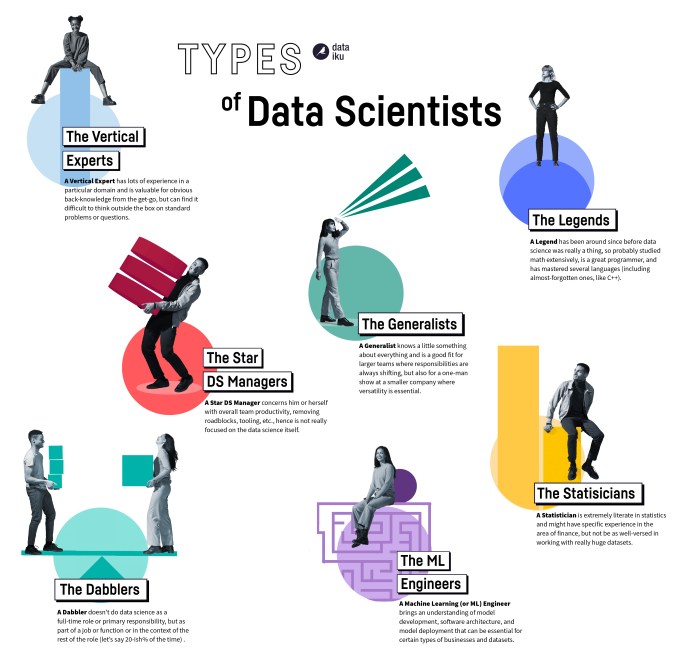By Florian Douetteau, Dataiku
Delivering on AI and data objectives is not an easy endeavor, and even as global maturity around AI initiatives is gradually increasing, many companies still stumble at one of the first (and trickiest) pitfalls: knowing what, and who, to look for when building teams and staffing initiatives.
A lot of the early AI hype focused primarily on the data scientist role, often expecting it to cover the whole data skills spectrum and fill every data-related organizational need. However, this approach is fundamentally flawed. Instead, one of the biggest things businesses must understand to address this challenge is that AI is, in fact, a team sport.
Imagine a world where players on the field (or court, or insert your favorite sports terrain here) are all simultaneously following their own individual interpretations of the game strategy. Each player is making only the moves that align with his or her own personal strengths without coordination with others. Let’s just say there would be a lot of missed passes, failed shots, and ultimately, frustrated players and coaches.
This analogy probably sounds a bit outrageous, because that’s just not how sports work — everyone knows you need people with a range of skill sets and that they need to communicate and work together to reach their common goal. Even if a team had the best player money could buy, (s)he couldn’t do it alone. At the same time, hiring additional players all with the exact same skills as the superstar doesn’t work either — and the same goes for AI initiatives.
That data unicorn you’re looking for doesn’t exist
Today, many companies still look to hire “data unicorns” — that is, supernatural all-in-one data wizards who possess the entire range of skills that the organization needs to reach their AI goals. They have deep knowledge of architecture and infrastructure, but they also are also skilled at building machine learning models. They can communicate requirements and needs to the business, but they also know how to push a model into production.
Not only is this an expensive and unrealistic strategy, but upon mapping out what the business needs and the skills required to fill those needs, it probably doesn’t make sense either.

Image Credits: Dataiku (opens in a new window)
Organizations are increasingly realizing that:
- Not all data scientists are created equal (Figure 1), and
- The data science process itself doesn’t solely revolve around data scientists anyway — you need other individuals with different skill sets to support each step of the AI lifecycle.
Thus, in order to go beyond the AI hype and successfully implement a comprehensive and sustainable Enterprise AI strategy, businesses need to be able to dissect each part of the AI models lifecycle (Figure 2), translate it into concrete organizational resources and needs, and then map those needs to the different data profiles available.
Hire the winning balance of skills
Before hiring, consider exactly what the needs of the business are and which types of data profiles would add the most value. Making this type of decision before creating a job posting will be beneficial in listing specific skills and honing interview questions. Some key questions to consider for understanding the organization’s immediate needs when it comes to staffing AI projects are:
- What are the first projects the organization will tackle?
- What are the final, expected outputs of these projects? Smaller scale (e.g., dashboards or analytics for internal use, more geared toward a self-service analytics initiative)? Or operationalized models in production impacting a large part (or parts) of the business, for which the team might require specialized skills?
- Is data for the projects readily available, or will part of the projects themselves be around finding and mining new data sources (in which case data engineering skills might come in handy)?
Achieving the proper balance between all the different data profiles is critical to an efficient data practice at the organization overall. Hiring too much of one profile and not enough of another can cause bottlenecks in processes and frustration all around. For example:
- An organization that hires too many data scientists out of the gate but that doesn’t have enough data architects to build and maintain the database architecture in a way that allows to continuously deploy, improve, and scale machine learning models in production may result in frustration on both sides, as neither of them sees the the real-life business impact of their work.
- Not having enough data leaders or managers can cause communication with the business and clear prioritization of projects to crumble, resulting in data scientists or analysts working on their own. This, in turn, could also mean missed opportunities for reuse across data projects.
The role of good tooling
Ultimately, finding a good mix of data professionals that is the right balance for the business is key to staff retention and to building a team that can actually execute on the AI ambitions of the organization. A well-oiled machine means happier employees, with fewer people having to perform tasks outside of their skill or comfort zones.
However, even with the hiring and upskilling resources and practices at hand, building and empowering great AI teams still presents a myriad of challenges. Data science, machine learning, and AI platforms (like Dataiku) are a clear win for data teams and, when implemented the right way, can serve as a foundation for building a great team.
By embracing the different strengths and technical skill sets of various contributors and enabling them to consolidate their work in a governed and organized way, the right tools can ease these types of pains and allow teams to develop AI projects both faster and more effectively.